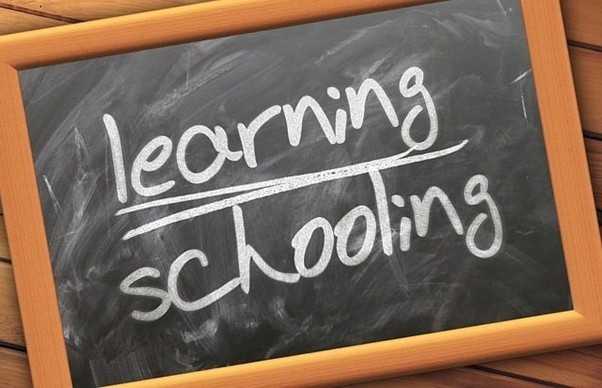A guide to help teachers get their children moving, learning, and enjoying every day.
5 Areas to Build a Truly Active School
Are you a primary teacher or headteacher who wants to get children more active throughout the school day? At imoves, we want to discuss the importance of physical activities in schools, and how to help your kids develop and participate at high levels of sport and physical activity. As students learn how to move, this new knowledge has a positive impact on everything from critical thinking to control of their bodies, which are benefits throughout life and schooling.
This guide will help school leaders to understand the real benefits of increased activity, how to roll it out in your class or school, and provide easy-to-use examples for active learning and fostering a positive classroom environment.
For extra resources on how to encourage positive active learning, download the Active Schools Guide PDF.

What Are the Benefits?
Research shows that regular physical activity significantly improves:
- Academic achievement
- Focus and behavior
- Social and emotional well-being
- Physical health
A 2017 study of 10,000 children across 11 countries found that:
- ✅ High-quality PE + Active Learning boosts attainment by an additional year
- ✅ Focus & behavior improve by an additional 15 minutes per class
- ✅ Children feel happier and healthier overall
(Ref: Alvarez-Bueno, Celia; Universidad de Castilla-La Mancha et al, Pediatrics, 2017)
Another study over two years found that physically active lessons led to greater learning gains in mathematics and spelling, equating to an additional four months of progress. (Ref: Mullender-Wijnsma MJ, Pediatrics, 2016)

5 Key Areas of an Active School
To make a school truly active, focus on these five areas:
Mindset
- Do students, parents, and staff see activity as a core school value?
Active Learning
- Are non-PE lessons active?
- Is movement embedded in everyday learning with easily understandable concepts?
Structured Active Play
- Are all children active during breaktimes and lunchtimes?
- Do staff encourage activity?
High-Quality PE
- Is PE seen as essential or just an afterthought?
Active Clubs & Travel
- Are students engaged in before-and after-school activities?
- Do families encourage walking or cycling to school?
Click a link to jump to that section
Step 1: Creating a Positive Active Mindset
To create lasting change, mindset is everything. If activity is not part of the school’s core values, any efforts will be sporadic and short-lived.
Children need to get a sense of what physical activities can do for them in life and in their schooling.

Building an Active Schools Team
Get the right school leaders involved to ensure success:
- Team Motivator: Headteacher or Deputy Head (drives the initiative)
- "Get Active" Agent (GA): Senior Leader/PE Lead (champions the change)
- Ambassadors: Enthusiastic teachers to trial and share their experiences
- Teachers & Support Staff: Embed activity across the curriculum
- Students: Involve them in planning—active learning should be fun!
4-Step Process to Embedding an Active Culture
- 1. Ignition: Audit current activity levels, involve students in planning
- 2. Blast Off: Launch small, daily activities in class & breaktimes
- 3. Flight: Ensure activity is becoming a habit
- 4. Touchdown: Reflect, share success stories, & celebrate progress
Download the Active Schools Guide PDF for a printable version.
Step 2: Active Learning
Why It Works
- Active lessons improve focus, mood, and behavior.
- Research shows that active learning closes the gap between least and most active
Types of Active Learning
- Active Blasts: Quick bursts of movement (2-10 mins) using videos or simple exercises.
- Active Learning Tasks: Movement-based educational activities.
- Line Activities: Incorporating movement while waiting in line.
Examples of Active Learning Activities
- Choose Between: Jump for “yes,” crouch for “no.”
- Word Action Games: March for formal speech, freestyle dance for informal.
- Top & Tail: Start & end lessons with a movement-based recap.
- Circuit Learning: Rotate between stations solving problems.
- Data Collection Circuits: Place flashcards around the room, making students move to find answers. The inclusion of teaching resources helps children equate physical movement with different subjects.
- Team Games: Relays for sorting materials in science.
Step 3: Structured Active Play
Some children remain sedentary at breaktime, impacting mood, behavior, and learning.
The most important thing when trying to create an active school is to develop a child's confidence through active learning.
Solution: Breaktime Activity Zones
- Ball Sports Zone
- Creative Play Zone (Scrapstore Playpods)
- Dance Zone
- Running Track or Circuits
- Encourage student-led activities
- Train supervisors to facilitate active play
- Allow children to suggest new zones & activities
Step 4: High-Quality PE
Two Hours+ of PE per Week Is Essential
Why?
- Develops physical literacy
- Boosts cardiovascular fitness & muscular strength
- Enhances social & teamwork skills
4 Principles for Effective PE
- 1. Start Simple: Teach basic skills first.
- 2. Practice Makes Perfect: Allow plenty of repetition.
- 3. Small is Beautiful: Use mini-games instead of large-group play.
- 4. Fun, Fun, Fun! Ensure PE is engaging and enjoyable.
Maximising PE Activity Time
Traditional PE lessons include too much waiting time (7-12 mins of activity per 40-minute class).
Solution:
- Use small-sided games
- Keep kids moving constantly
- Minimize setup & downtime
Step 5: Extra-Curricular Clubs & Active Travel
- Before & After-School Clubs Innovative ideas that work:
- Wheelie Club – Bikes, scooters, and skateboards with obstacle courses.
- Pilates for Kids – Builds core strength, balance, and motor skills.
- SoccerJam – Football skills combined with music.
- Bootcamp Circuits – Fun & high-energy workout sessions.
- Active Travel Encourage walking, cycling, and scooting to school.
- Walking buses
- Bike trains
- Active family challenges
Download the Active Schools Guide PDF for a printable version.
Final Thoughts
- "Rome wasn’t built in a day!"
- Gradual, long-term changes lead to success.
- Schools that prioritize activity see improvements in academic performance, behavior, and overall well-being.
- Start small
- Get buy-in from teachers, parents, and students
- Make activity fun & engaging
“The happiest, healthiest schools are also the most successful.”
For more support: Email Imogen at imogen@imoves.com
What to Read Next
- What are the benefits of an active classroom?
- How can I manage behaviour during an active lesson?
- How can I set up my classroom for active lessons?
- What teaching methods can I use in active learning?
- How can I use standing-in-line activities to get my class more active?
- How can I use structured play in my Primary School?
- What can I do to make my lessons more active?